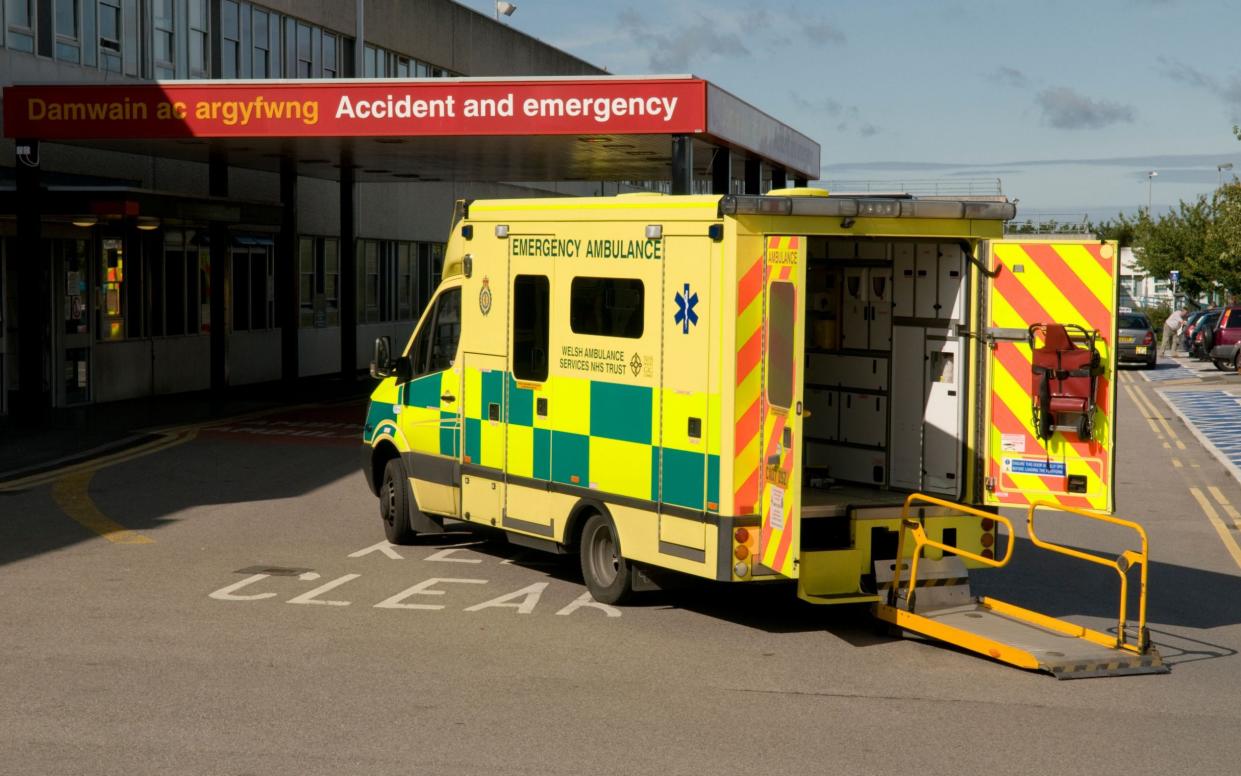Patients in Wales more likely to face year-long NHS wait than England, data show

Patients in Labour-run Wales are nine times as likely as those in England to face waits of at least a year for NHS hospital care, official figures show.
The Office for National Statistics data comparing UK nations show a far higher proportion of the public in Wales facing the longest waits.
Overall, 4.5 per cent of people in Wales were on NHS hospital waiting lists for more than 12 months, compared with 0.5 per cent of those in England, the data for March of this year shows.
The figures also show that people in Wales are more likely to be on an NHS waiting list overall.
In total, 21.6 per cent of people in Wales are waiting, according to the data, compared with 12.9 per cent of those in England.
Independent experts welcomed the analysis, published for the first time, in helping to make accurate comparisons between the two nations.
It follows fierce rows between the Conservatives and Welsh Labour about the state of the NHS in Wales. Health policy is devolved to the Welsh government where Welsh Labour has been in charge since 1999.
Rishi Sunak has faced criticism for the failure to bring down waiting times in England but the Tories said the new data showed the risks if England goes the same way as Wales if Sir Keir Starmer wins the election.
A Conservative Party spokesman said: “In Labour-run Wales, overall waiting records have hit an all-time record high, and patients are nine times as likely as those in England to be waiting more than a year for treatment. The evidence is clear for everyone to see – where Labour are in charge of the NHS, patients are worse off.
“In contrast, the Conservatives’ bold action has virtually eliminated the longest waits of over 18 months and overall waiting lists are falling at the fastest rate in over a decade outside of the pandemic.
“Only Rishi Sunak and the Conservatives will stick with the clear plan to continue cutting waiting lists and secure the future of the NHS.”
Under the current UK funding model, Wales receives £1.20 for every £1 spent on health in England.
Sir Keir Starmer, the leader of the Labour Party, has previously praised the Welsh government when it was led by Mark Drakeford, describing it as “a blueprint for what Labour can do across the UK”.
Labour has been approached for comment.
Rishi Sunak has faced heavy criticism for the failure to significantly bring down NHS waiting lists in England since making a promise to do so in January 2023.

In total, the list stood at 7.6 million in April, up from 7.25 million when he made the pledge, despite some falls in recent months. As some people are on the lists for multiple conditions, the latest figure equates to 6.3 million patients in total, according to NHS statistics.
Meanwhile, waits in Wales have reached a record high with a list of 768,899 in March, up from 734,116 in January 2023.
Because some patients are on more than one waiting list for different conditions, the total number of actual patients reached 599,100 in March, up from 575,600 in January 2023, according to data from Digital Health and Care Wales.
However, in England only “consultant-led” pathways are reported, whereas in Wales some non-consultant-led pathways – such as a referral from a GP to physio – are included, making comparisons difficult until now.
The ONS survey also questioned people from England, Wales and Scotland on whether they were waiting for a hospital appointment, test or to start receiving medical treatment through the NHS.
In total, 25 per cent of those in England were waiting, compared with 29 per cent in Wales, while in Scotland the figure was 22 per cent.
Mark Dayan, the policy analyst and head of public affairs at the Nuffield Trust, said the latest figures from the ONS were helpful in allowing more accurate comparisons of waiting lists across the different UK countries.
He said: “It confirms that people in Wales are more likely to be waiting for care. The gap is much larger for the longest waits of over a year, but this isn’t necessarily a fair indication of the different systems’ performance. England just seems to have focused more on the longest waits, which is not necessarily the best decision if Wales and Scotland have been prioritising based on clinical need instead.”
He said it was not clear why Wales seemed to deliver planned care more slowly overall, but suggested that longer hospital stays in Wales might be a factor, slowing the turnover of patients.
Mr Dayan said: “Although Wales spends more money per person than England, it has an older population facing more deprivation, so need is higher in two different ways at once.
“It also has fewer consultant doctors per person than England, which may be important in planned hospital care. While an exact comparison is difficult, Welsh patients spend longer on average in hospital than English ones, and that means fewer can be treated using the same number of beds and staff. This is an obvious focus for improving efficiency, as long as that can be done safely.”
Wes Streeting, the shadow health secretary, has said he wants to see the NHS in England buy private beds from care homes, in order to “unblock” the health and care system, and get patients out of hospital sooner.
According to NHS England figures, an average of 12,360 hospital beds per day last month were occupied by people ready to be discharged.



